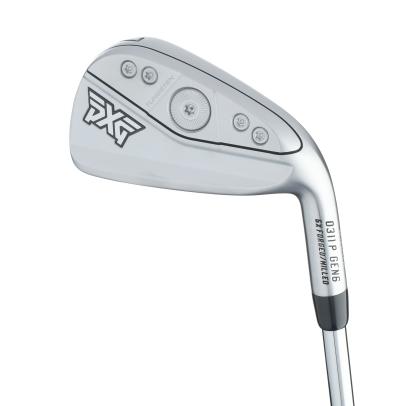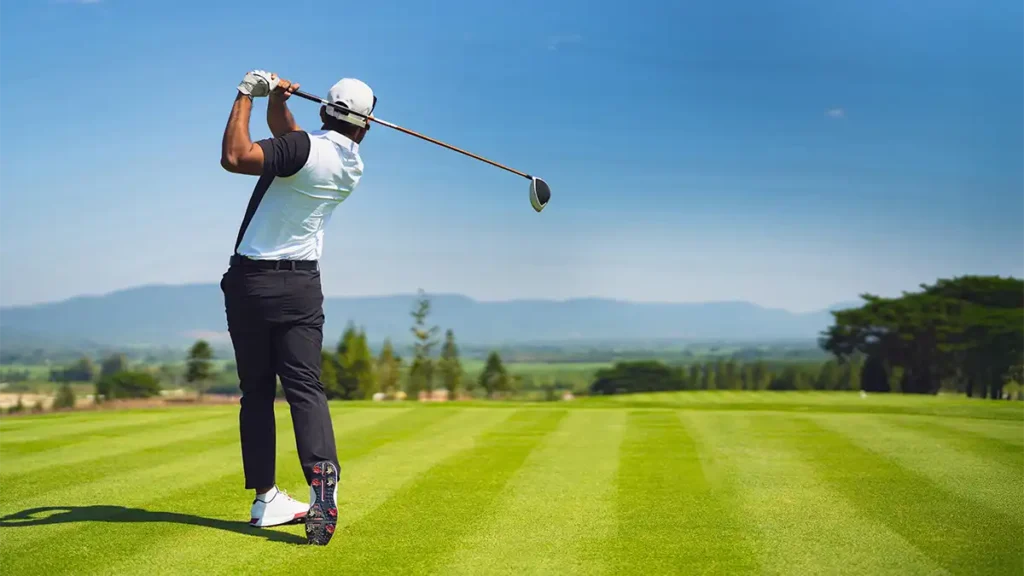If you’ve ever missed the centre of the clubface – and let’s be honest, who hasn’t – you know the sensation of a mishit at impact. More specifically, the toe-side miss with an iron that sends unwanted vibrations to your hands and results in another missed green in regulation.
RELATED: Hot List 2025 – Game-Improvement Irons
Based on robotic testing with the Golf Laboratories swing robot, a toe miss with a 7-iron results in roughly 11 metres of carry distance loss when compared to a geometric centre strike. One club less on an approach could mean finding the front bunker instead of the putting surface.
While it’s easy to assume all irons produce similar carry loss numbers on a toe miss, recent testing confirmed some irons are starting to buck the distance loss trend. And none of them would be considered a true game-improvement model.
The rest are geared for players seeking forgiveness without going up in size. Several irons in the test showed an ability to maintain upwards of 90 percent ball speed on extreme toe strikes, with minimal drop-offs in launch or spin. That’s game-changing stuff for players who live out on the toe.
It’s a quiet revolution, but a meaningful one.
Technology is now compensating for your most common flaws, and doing it in a way that still looks clean behind the ball. For anyone chasing consistency without the ego hit of wielding a beefier game-improvement model, this new wave of iron design might be exactly what you’ve been waiting for.
Standouts
1. PXG 0311P Gen6 (-4.8 metres of carry distance lost compared to a geometric centre strike)

Increasing launch and decreasing spin is a recipe for distance in irons as well as metal woods. The internal groove built into the back surface of the high-strength HT1770 steel face insert helps in that regard. The groove, about ten-thousandths of an inch deep, runs up both sides and across the top of the perimeter to create more give in the face. It also helps promote a gear effect to increase launch and decrease spin. A large weight in the back is more than ornamentation; it allows fitters to dial in the desired swingweight.
2. Callaway Apex Ai200 (-6.0 metres)

• A forged hollow-body clubhead is married to a forged high-strength 455-stainless-steel face that wraps around the top and sole to create impressive face flex through the 8-iron.
• The “Ai Smart Face” uses the power of AI to analyse regular golfer swing data to deliver tight dispersion along with added metres.
• A cool feature of the Ai200 is the strategically positioned metal-injected moulding weights that ensure the ideal centre of gravity to create the proper launch.
• Twelve grams have been taken out of the hosel area, which allows the centre of gravity to be close to the centre of the face.
• Tungsten encased in urethane with microscopic air bubbles assists feel and positions the centre of gravity low in the long and middle irons.
• The Ai200 features a smaller profile compared to the Apex 21.
3. Cobra 3DP Tour (-6.5 metres)

• The irons are completely 3-D printed, allowing for a level of precision and intricacy not available in clubs that are forged or cast.
• The 3-D printing allows for a soft, forged-like feel in an iron with game-improvement traits.
• An interior lattice provides support for durability and produces a pleasing sound.
• The weight savings the lattice provides allows the use of tungsten weighting to achieve stability in a blade-like iron.
• Tungsten also helps lower the centre of gravity, making this an iron even 15-handicappers can play.
• The company has produced more than 50 3-D print projects for tour players with nearly 20 put in play, proving the viability of 3-D printed clubs.
4. PXG 0317T (-7.0 metres)

• This sharp-looking iron undergoes a robotic polishing process to ensure consistent geometries and a flawless finish.
• The irons feature a hollow body with a polymer inside the head to improve spin consistency.
• The HT 1770 maraging-steel face is slightly thicker than other PXG irons and features the forgiveness of a hollow body with the playing traits of a single-piece forging.
• A 15-gram internal tungsten weight in the toe enables PXG to boost forgiveness plus optimise the centre of gravity so that it stays in line with the centre of the face.
• Three-step forged from 8620 carbon steel for a cushiony feel.
• The large tungsten weight on the back of the head is used to achieve the desired swingweight.
5. Cobra King Tec X (-8.0 metres)

• The 4 through 7-irons feature a hollow body with soft foam inside to enhance feel and help the face bend.
• A 70-gram tungsten weight is used to lower the centre of gravity to maximise launch.
• The wide sole also helps with launch and with minimising fat shots.
• Consumer feedback led Cobra to design a rounder, slimmer topline and to more neatly hide the offset to provide an appealing look at address.
• Although Bryson DeChambeau is no longer sponsored by Cobra, the company has continued down the path of one-length irons with the King Tec-X One Length in which every iron is the length and weight of a 7-iron.



